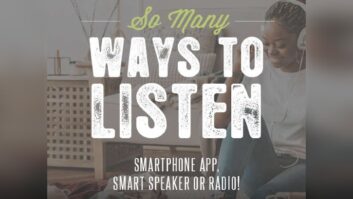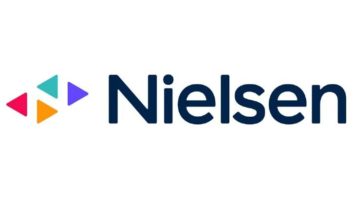In November of last year, streaming audio website Rdio.com declared bankruptcy, finding itself $220 million in debt. According to the Hollywood Reporter, Rdio was losing about $2 million a month when it decided to pull the plug.

iStockphoto/milindri The company “took in $1.5 million per month” from its $9.99 per month subscriptions, according to the Reporter, plus $100,000–$150,000 per month in ad sales. But it had to pay out nearly $4 million in monthly operating expenses, “including payroll for 140 employees, royalty payments to rights owners and service maintenance costs.”
Pandora subsequently bought “key assets” from Rdio for $75 million; Rdio’s online goodbye message described the company as now being “part of the Pandora team.”
The site went silent Dec. 22, 2015.
In the wake of that development, Rdio partner/terrestrial broadcaster Cumulus Media was circumspect about the bankruptcy and its future plans for streaming audio: “While we have invested historically in apps and websites so our listeners can enjoy our programming anytime and anywhere, we will over time continue to evolve a holistic digital strategy that provides a differentiated solution for advertisers and listeners,” said Collin R. Jones, Cumulus Media’s director of M&A, corporate development and strategy, in a statement prepared for Radio World. “Beyond this statement, the company has no additional related information to share at this time,” wrote the Cumulus Media public relations representative who handled our request.
In January of this year, the venerable (since 1999) streaming audio service Live365 also shut down, again over money problems. In this case, Live365 couldn’t afford to pay increased royalties set by the U.S. Copyright Royalty Board.
“There are always possibilities that we can come back in one form or another, but at this point in time, Jan. 31, 2016 is the last day that Live365’s streaming servers and website will be maintained and supported,” the company stated in an email sent to subscribers and published on Betanews.com.
With the demise of these online services, some might argue that there’s room for new players to enter the streaming audio market; as was reflected by news reports that Amazon was “prepping a Spotify-killer.”
However, Radio World found streaming media market watchers skeptical of such optimism, and of the industry’s economic viability in its current state.
SHOW ME THE MONEY
The quote from the 1996 Tom Cruise movie “Jerry Maguire” was “Show me the money!” It has become a cliché but it sums up the problem facing streaming audio as a whole. After the payment of music royalties and other operating costs, the profits just aren’t there, at least not yet.
“My understanding is that this sector is not making money,” said James Cridland, who calls himself a “radio futurologist” and who is managing director of the media information site media.info.
“Spotify is now losing money; Deezer is continuing to lose money. Pandora is also losing money. Increasingly, I hear that audio is being seen as a toxic area for investors, which has some ramifications for broadcast radio.”
Said Simon Cole; CEO of 7digital, a b2b digital music and radio services company, “Rdio’s bankruptcy shows just how difficult and costly it is to get a music streaming service off the ground, especially if doing it all yourself. It’s telling that the most valuable asset [sold] to Pandora was Rdio’s content management platform,” rather than the company’s subscriber list or other intellectual assets.
TOO MANY PLAYERS
The loss of Rdio and Live365 left many players in the streaming audio space, including well-known majors like Pandora, Spotify and broadcaster-owned iHeartRadio, among other niche services. These known commodities are the ones most likely to survive, according to John December, editor/publisher of the media information website www.December.com.
“Streaming media sites that have been able to establish strong brand recognition can continue to grow audiences,” he said. “Sites that have confusing or difficult-to-use and difficult-to-understand interfaces seem to fall by the wayside.”
December expects the streaming media space to undergo consolidation as weaker players fail or are eaten up by their stronger rivals.
This view is shared by Simon Cole. “Our sector is definitely on the verge of consolidation, not only in terms of the direct-to-consumer companies, but also the B2B side of the industry.” He said last year saw a number of digital music players go bust or merge, and “further moves around the board are inevitable as some business models struggle more than others.”
RADIO HAS THE EDGE — IF IT WANTS TO USE IT
If there is a bright light in the gloom of streaming audio, it is that radio broadcasters are well-positioned to put together streaming audio companies or spin off services of their own.
“Broadcast radio has better music deals, in many cases, than pureplay [non-radio] online services,” said Cridland. “That was underlined in the recent Copyright Royalty Board U.S. decision to increase Pandora’s online music costs by 20 percent, but decrease broadcast radio’s.”
Broadcast radio also has significant marketing clout and is still a mass medium, he said. “iHeart’s relative success in this field is partially due to that relentless marketing, and the way it has used iHeart as a unifying brand for its many disconnected broadcast brands,” Cridland said. “And finally, broadcast radio has actual human talent as well as access to music. Spotify and Apple have both made large acquisitions in terms of talent recently, but broadcast radio has much more.”
In October, iHeartMedia announced two paid versions of its iHeartRadio streaming services. They will launch in January, and many broadcasters will likely pay close attention to how iHeartRadio Plus and iHeartRadio All Access are received by listeners.
Radio has one more ace up its sleeve: It is accustomed to programming content for listeners (the “lean-back” model of streaming audio), as compared to requiring listeners to do this for themselves (the “lean-forward” model).
“People who have been listening to radio for years want another easy-to-use lean-back experience,” said Cole. “Streaming services have not typically offered this, so the influence of radio on the new generation of digital music offerings opens up an exciting opportunity to reach this underserved audience.”
The big unknown is whether other broadcasters want to follow iHeartMedia and Cumulus Media’s leads and venture into online streaming competition against Pandora, Spotify and possibly a revamped Amazon service.
Cridland has his doubts. “The question for broadcast radio is whether they see much benefit in investing in an area which has proven itself to be difficult to raise profit from; when those broadcast radio groups are still repaying debt from consolidation,” he said.












